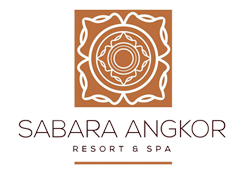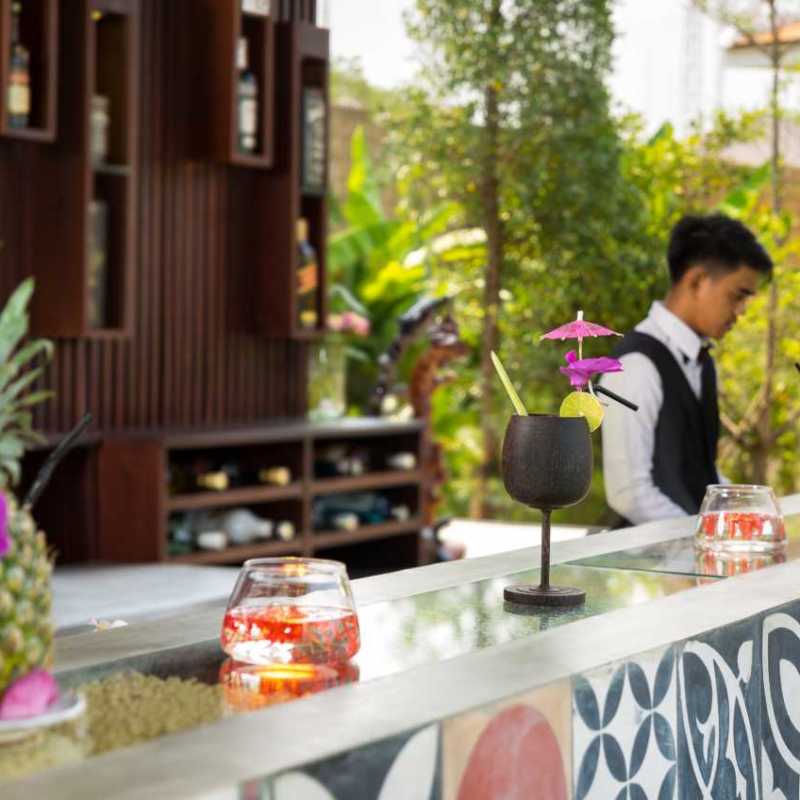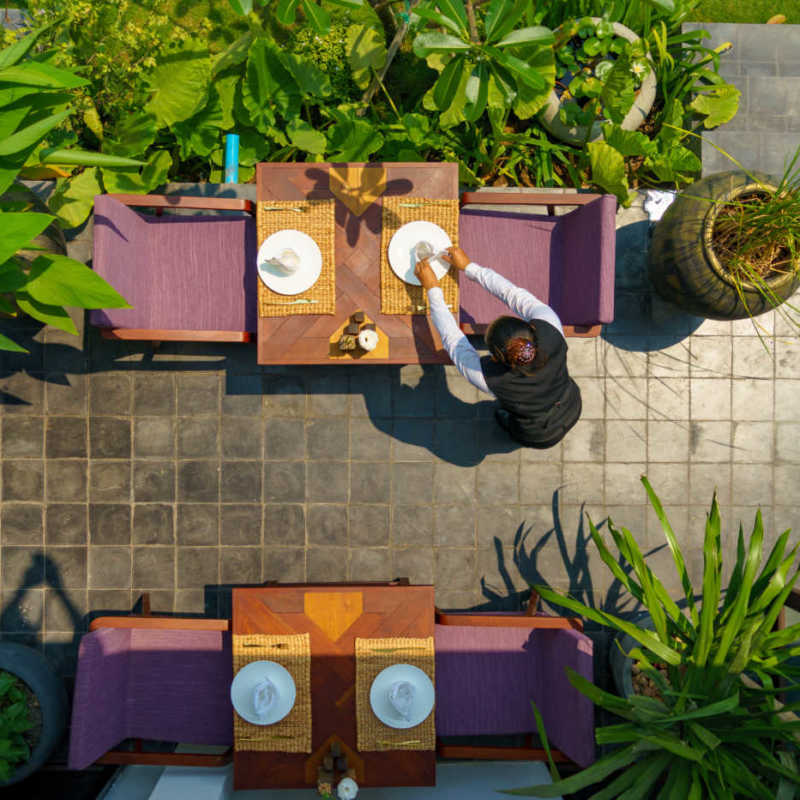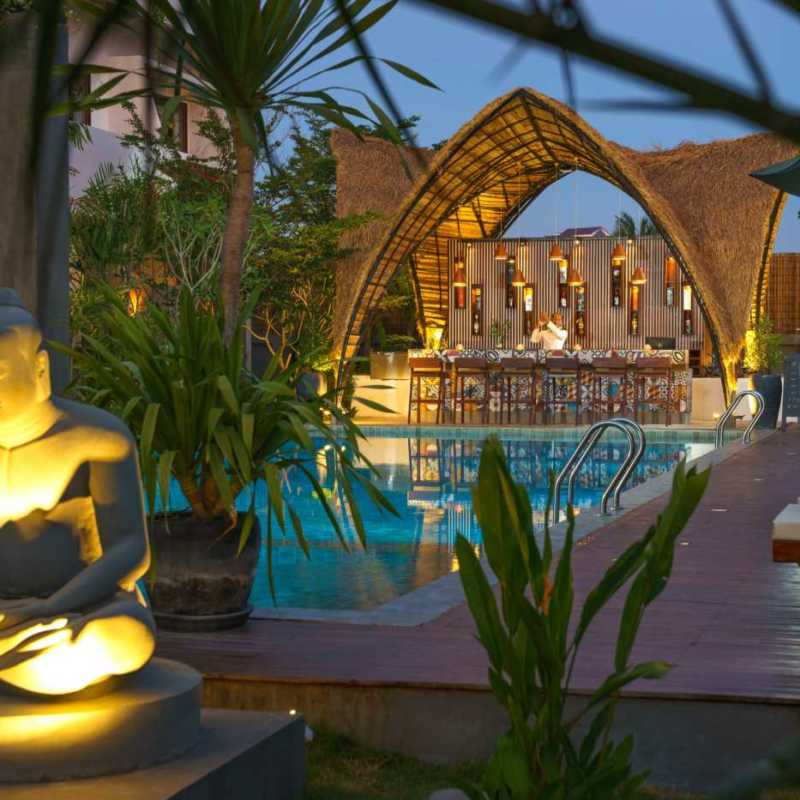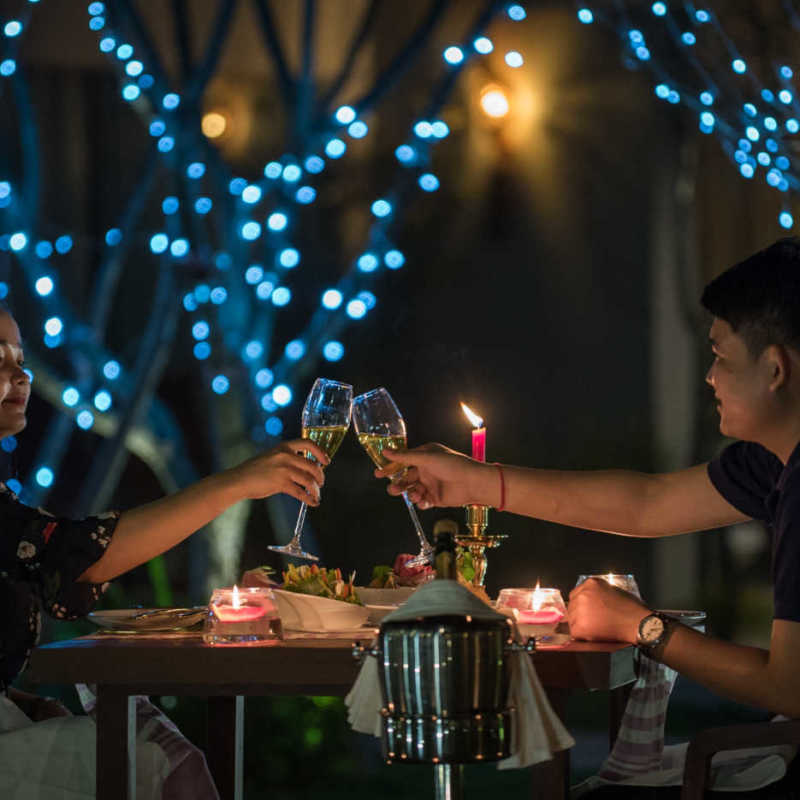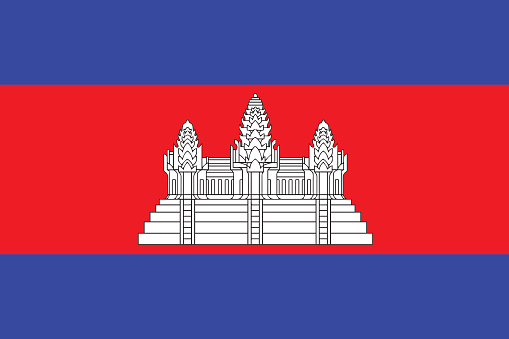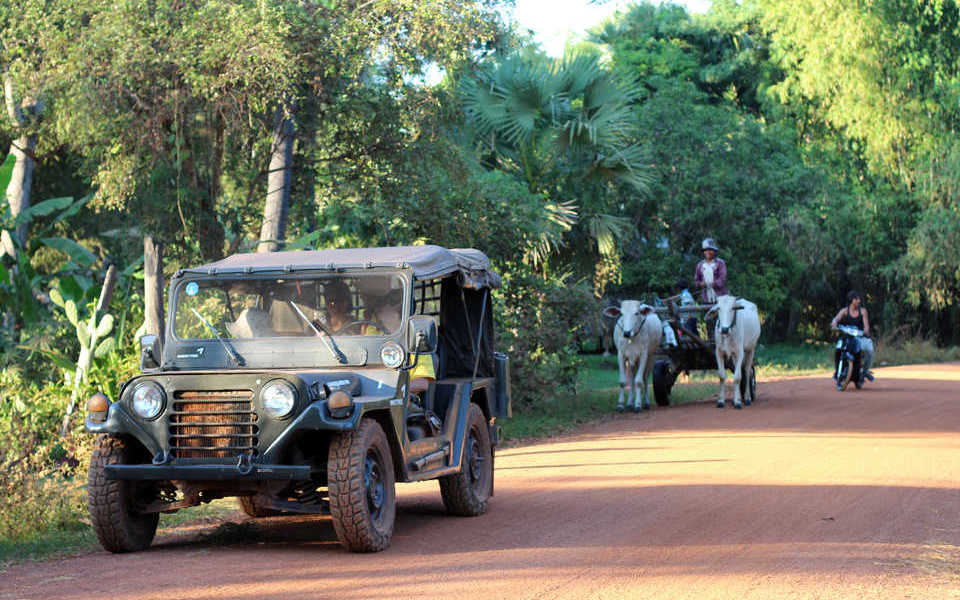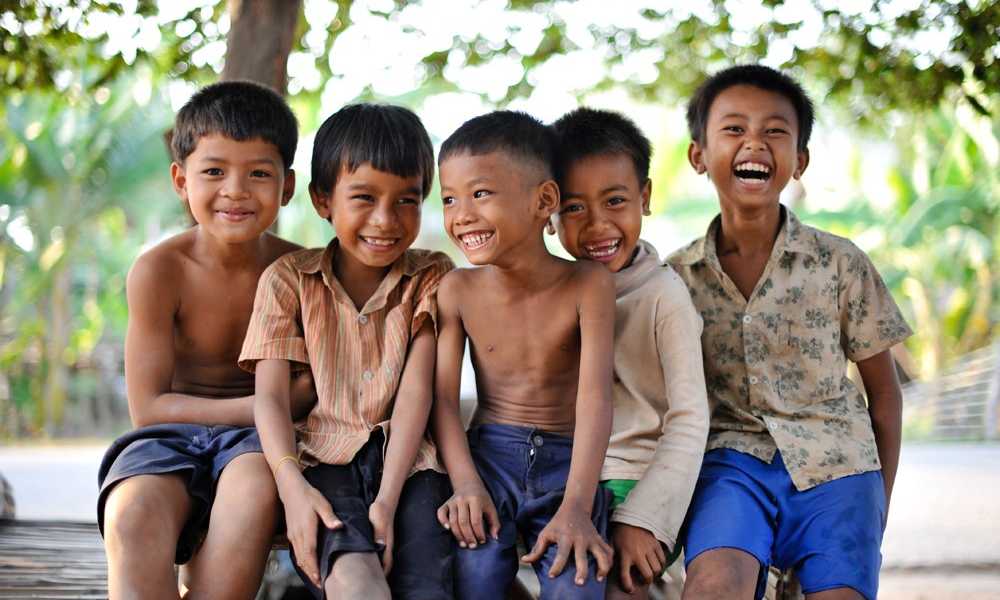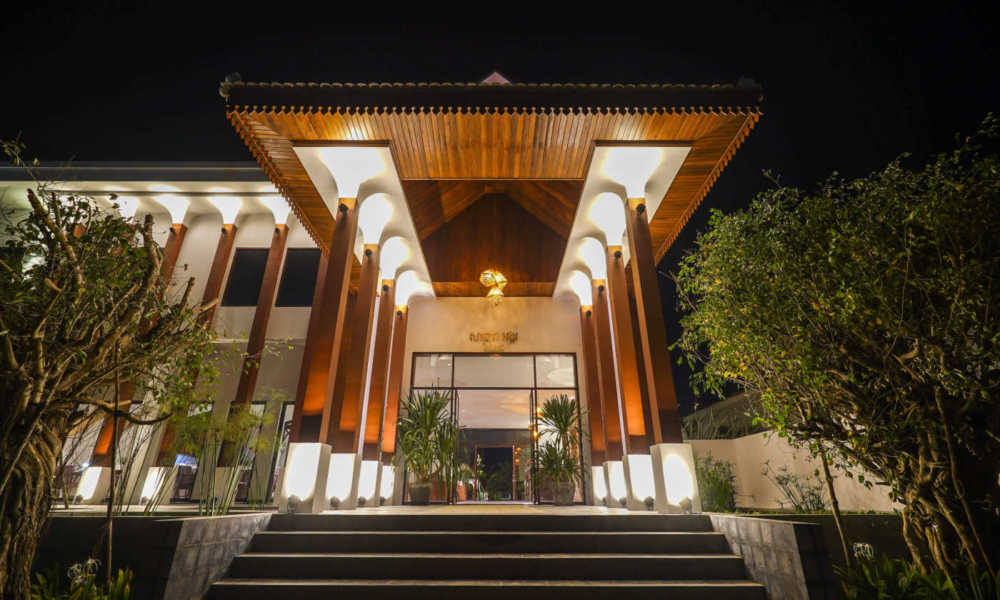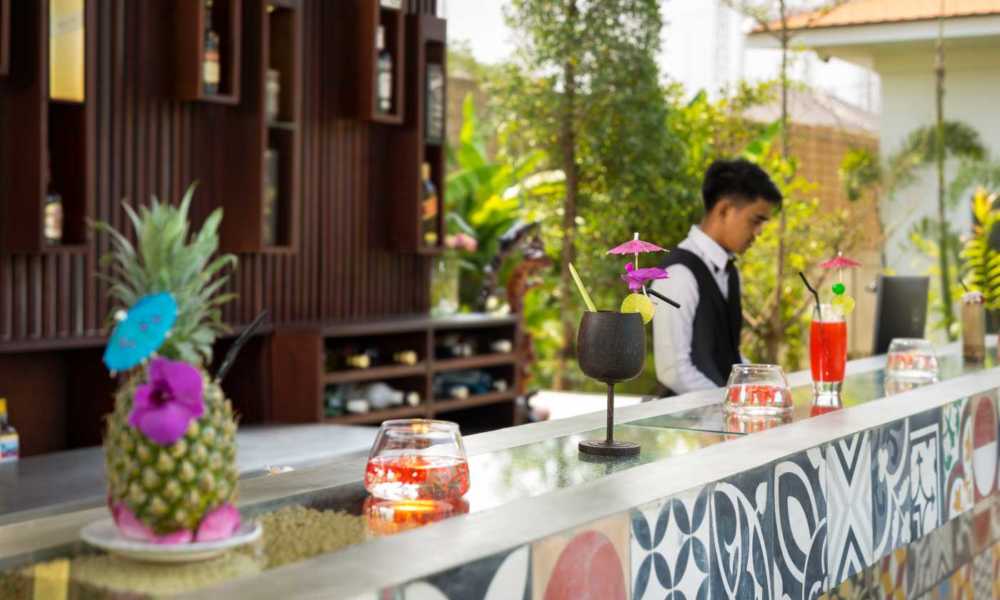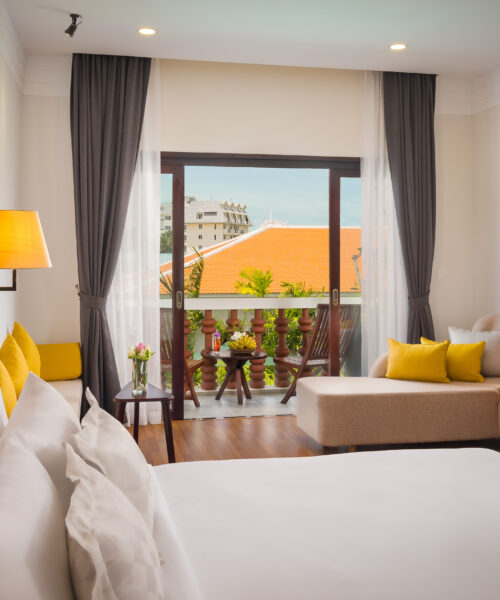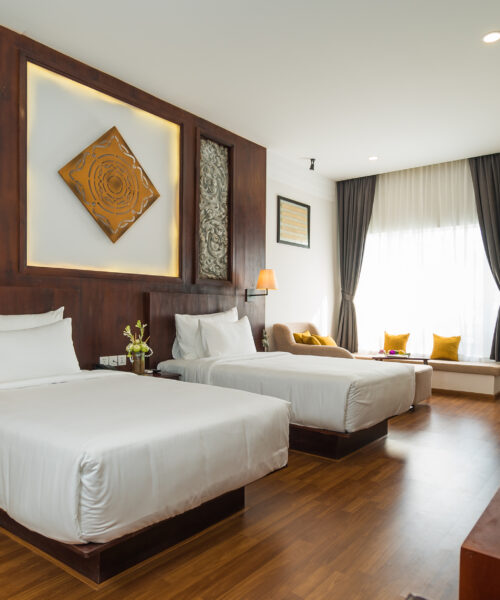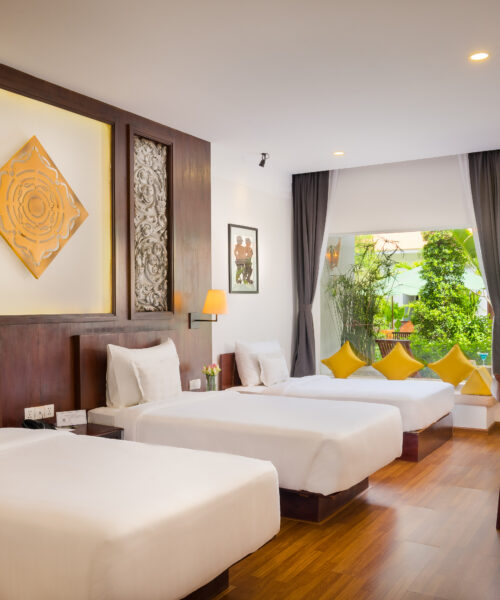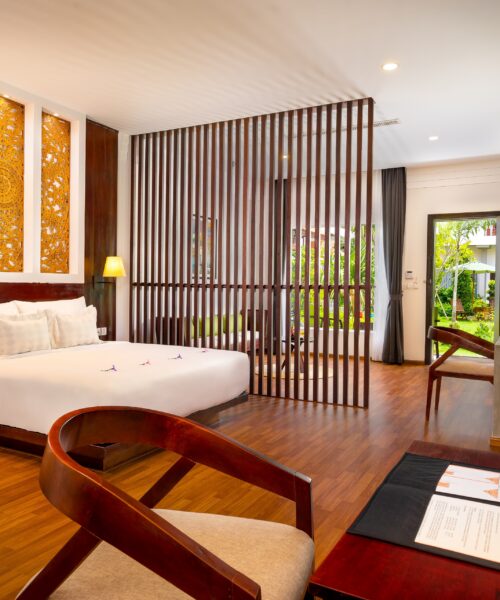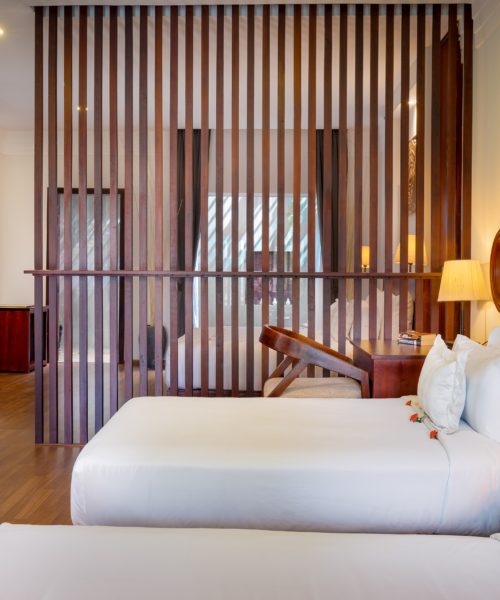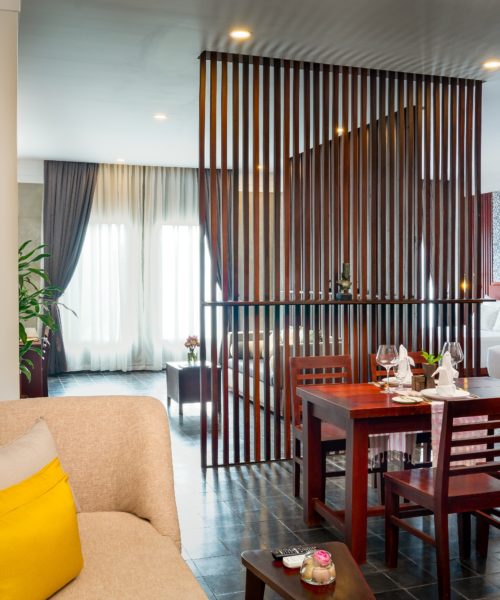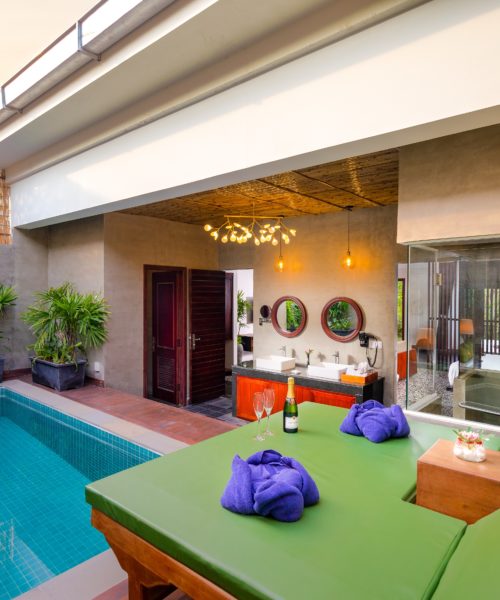Kingdom of Cambodia
Cambodia Geography
Cambodia is a country in mainland Southeast Asia, bordering Thailand, Laos, Vietnam, the Gulf of Thailand. The country is situated in its entirety inside the tropical Indomalayan ecozone and the Indochina Time zone (ICT).
Cambodia’s main geographical features are the low lying Central Plain that includes the Tonlé Sap basin, the lower Mekong River flood-plains and the Bassac River plain surrounded by mountain ranges to the north, east, in the south-west and south. The central lowlands extend into Vietnam to the south-east. The south and south-west of the country constitute a 443 km (275 mi) long coast at the Gulf of Thailand, characterized by sizable mangrove marshes, peninsulas, sandy beaches and headlands and bays. Cambodia’s territorial waters account for over 50 islands. The highest peak is Phnom Aural, sitting 1,810 meters, (5,938 ft) above sea level.
The landmass is bisected by the Mekong river, which at 486 km (302 mi) is the longest river in Cambodia. After extensive rapids, turbulent sections and cataracts in Laos, the river enters the country at Stung Treng province, is predominantly calm and navigable during the entire year as it widens considerably in the lowlands. The Mekong’s waters disperse into the surrounding wetlands of central Cambodia and strongly affect the seasonal nature of the Tonlé Sap lake.
Two third of the country’s population live in the lowlands, where the rich sediment deposited during the Mekong’s annual flooding makes the agricultural lands highly fertile. The forests, low mountain ranges and local eco-regions still retain much of their natural potential and although still home to the largest areas of contiguous and intact forests in mainland Southeast Asia.
The majority of the country lies within the Tropical savanna climate zone, as the coastal areas in the South and West receive noticeably more and steady rain before and during the wet season. These areas constitute the easternmost fringes of the south-wes.t monsoon, determined to be inside the Tropical monsoon climate. Countrywide there are two seasons of relatively equal length, defined by varying precipitation as temperatures and humidity are generally high and steady throughout the entire year.
Pre-History
Archeologist found an old cave at Laang Spean in Battambang province, northwest Cambodia confirmed the presence stone tools from 6000–7000 BCE and pottery from 4200 BCE. Starting in 2009 archaeological research of the Franco-Cambodian Prehistoric Mission has documented a complete cultural sequence from 71.000 years BP to the Neolithic period in the cave and lead to the common interpretation, that the cave contains the archaeological remains of a first occupation by hunter and gatherer groups with highly developed hunting strategies and stone tool making techniques, as well as highly artistic pottery making and design, and with elaborate social, cultural, symbolic and exequial practices.
Skulls and human bones found at Samrong Sen in Kampong Chhnang Province date from 1500 BCE. Heng Sophady (2007) has drawn comparisons between Samrong Sen and the circular earthwork sites of eastern Cambodia. These people may have migrated from South-eastern China to the Indochinese Peninsula. Scholars trace the first cultivation of rice and the first bronze making in Southeast Asia to these people.
In 2010 Examination of skeletal material from graves at Phum Snay in north-west Cambodia revealed an exceptionally high number of injuries, especially to the head, likely to have been caused by interpersonal violence. The graves also contain a quantity of swords and other offensive weapons used in conflict. The Iron Age period of Southeast Asia begins around 500 BCE and lasts until the end of the Funan era – around 500 A.D.
Tourist Attraction (To be updated)
Khmer History (To be updated)
